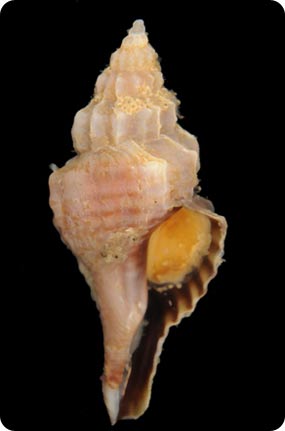The Atlantic oyster drill is well named. The inch-long snail climbs on top of an oyster, pours a chemical solvent on the oyster’s shell, then drills a tiny hole. After that, it inserts a tube and sucks out the tasty meat, leaving nothing but an empty shell.
 An Atlantic Oyster Drill. Credit: Southeastern Regional Taxonomic Center/South Carolina Department of Natural Resources
An Atlantic Oyster Drill. Credit: Southeastern Regional Taxonomic Center/South Carolina Department of Natural ResourcesPart of the name, though, isn’t quite as accurate as it used to be. The Atlantic oyster drill has invaded bays along the Pacific coast, too. In California, the snail is plowing through native oysters in a hurry.
Researchers studied Tomales Bay, which is about 40 miles north of San Francisco. It’s home to Olympia oysters, which are native to California. Native oyster drills harass the oysters, but they’re held in check by native red rock crabs. So the oysters, snails, and crabs have maintained a delicate balance.
A few decades back, though, people transplanted other oysters from the East Coast. That includes the Atlantic oyster drill, which promptly went to work.
Today, the Atlantic oyster drill has cleared out many of the native oysters in Tomales Bay. The snails aren’t held in check by the crabs because they can go places the crabs can’t -- the fresher water at the head of the bay. And they’re joined there by another invasive species -- a crab from Europe, which doesn’t go after the snails, and which crowds out the red rock crabs.
For now, the only place the Olympia oysters are doing well is in the deep center of the bay -- where they’re safe from the little invaders from the East.

